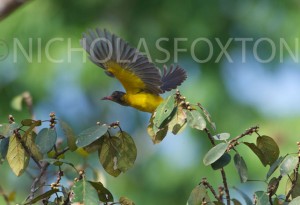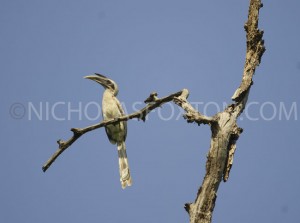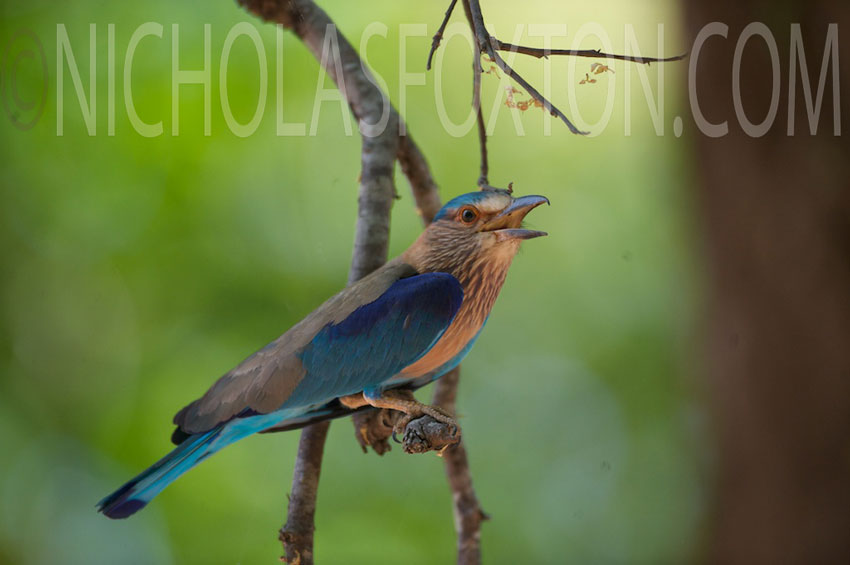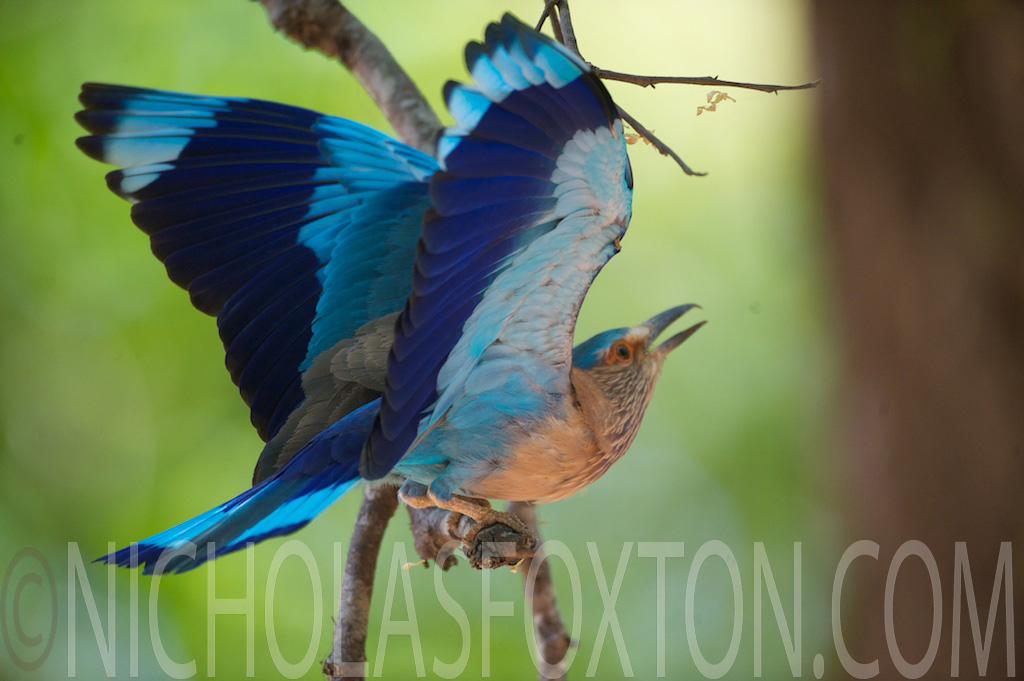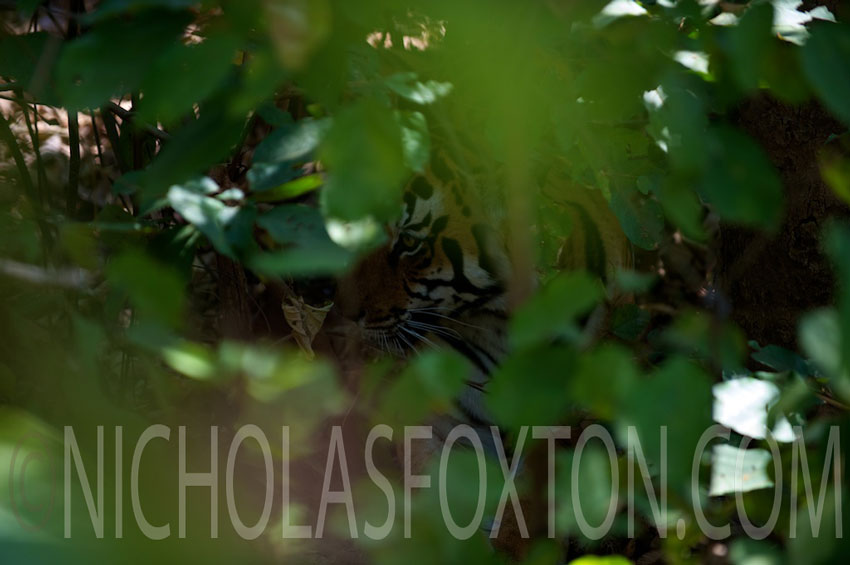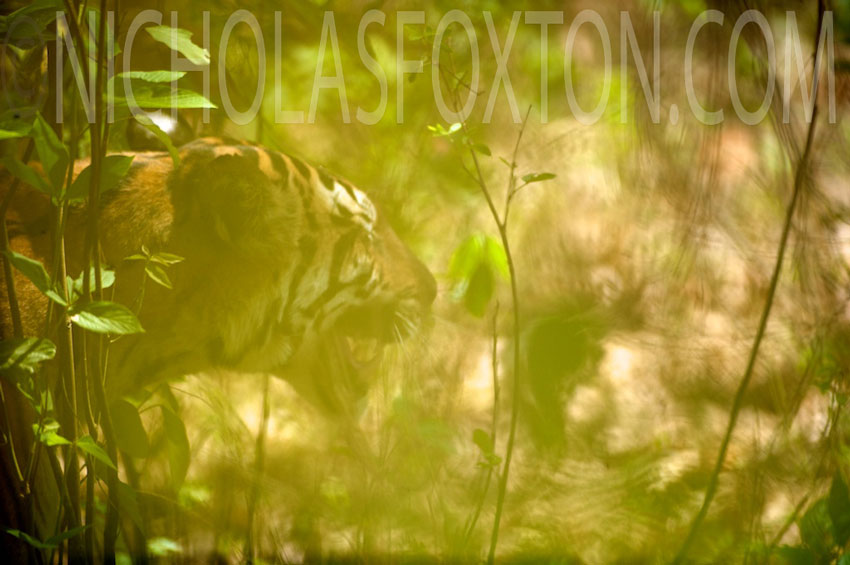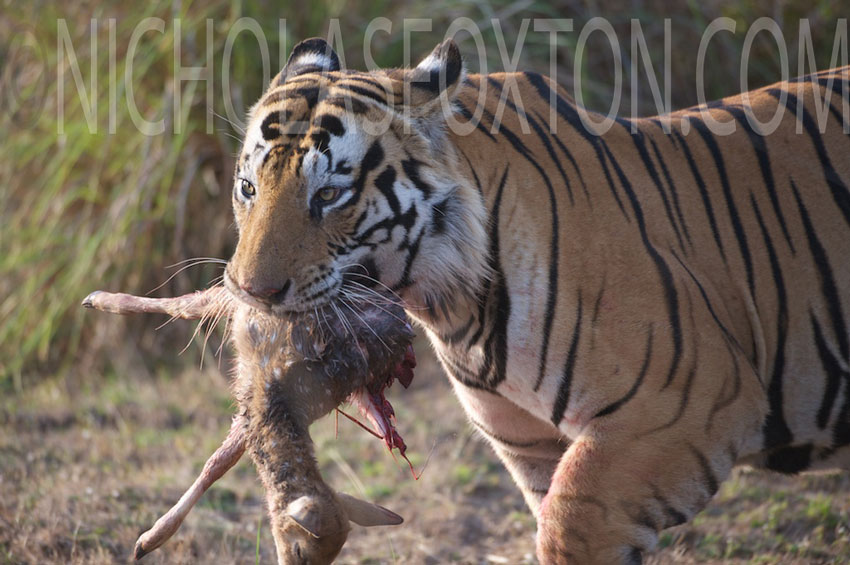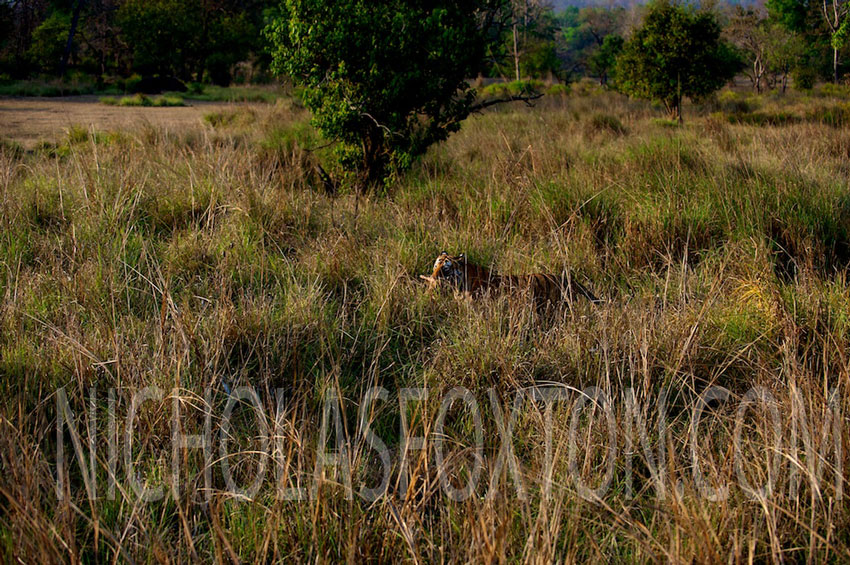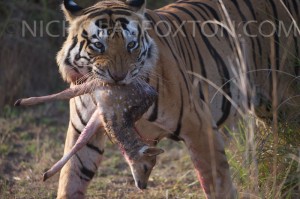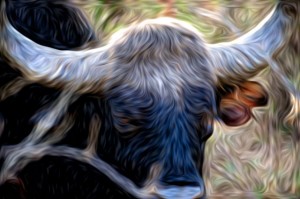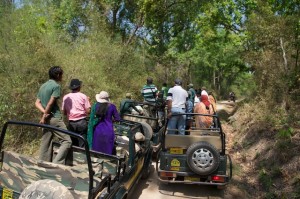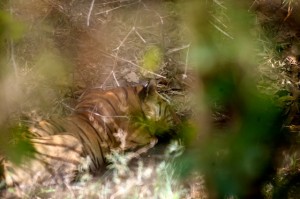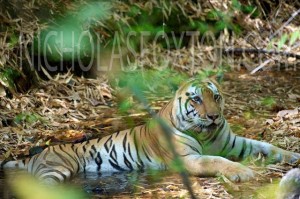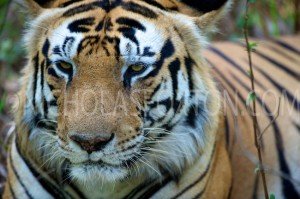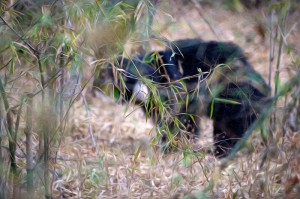 The guides say that here at Kanha you see one leopard for every ten tigers that you see and for every ten leopards you see a sloth bear. I had a very good sighting of ‘Adam Zad’ (see my previous post) this morning just after entering the park. The bear was hurrying across the track after we disturbed it tearing open a termite mound. It sped off (nothing slothful about it) into the bamboo thicket before peering at us through the foilage. I’d been chatting about bear to two sisters from Scotland (Heather & Diane) in the jeep behind me as we waited for the Park to open. My guide, driver and expert Bafati has had two sightings in the last six months, both of them with me. It was a good sighting but a poor one for photography (or alternatively a poor photographer !) as the bear didn’t hang around long enough to tweak the autofocus past the bamboo that obscured it.It was a privilege to see it, but as Heather and Diane had said that they would rather see a bear than a tiger I rather feel that it was their sighting that I poached ! I’ve posted the poor image above (which I’ve run through a filter that you’ll have to email me for details of ) just to show that you can have the right kit but getting a good image is often about luck and speed. I was standing up in the gypsy, when Bafati saw the bear slammed the anchors on, my big lens which was on the back seat hit the back of my legs and rolled onto the floor (it’s designed to put up with that sort of abuse). I grabbed it, and started shooting and the bear was off into the dense bamboo thicket before I could get critical focus on the eyes. It was all over in under twenty seconds.
The guides say that here at Kanha you see one leopard for every ten tigers that you see and for every ten leopards you see a sloth bear. I had a very good sighting of ‘Adam Zad’ (see my previous post) this morning just after entering the park. The bear was hurrying across the track after we disturbed it tearing open a termite mound. It sped off (nothing slothful about it) into the bamboo thicket before peering at us through the foilage. I’d been chatting about bear to two sisters from Scotland (Heather & Diane) in the jeep behind me as we waited for the Park to open. My guide, driver and expert Bafati has had two sightings in the last six months, both of them with me. It was a good sighting but a poor one for photography (or alternatively a poor photographer !) as the bear didn’t hang around long enough to tweak the autofocus past the bamboo that obscured it.It was a privilege to see it, but as Heather and Diane had said that they would rather see a bear than a tiger I rather feel that it was their sighting that I poached ! I’ve posted the poor image above (which I’ve run through a filter that you’ll have to email me for details of ) just to show that you can have the right kit but getting a good image is often about luck and speed. I was standing up in the gypsy, when Bafati saw the bear slammed the anchors on, my big lens which was on the back seat hit the back of my legs and rolled onto the floor (it’s designed to put up with that sort of abuse). I grabbed it, and started shooting and the bear was off into the dense bamboo thicket before I could get critical focus on the eyes. It was all over in under twenty seconds.
I’m not sure about the reason for the Sloth part of the name – as I say they isn’t really anything slothful about them; shambling, slightly scruffy, suspicious and perhaps a little curmudgeonly (if I may be permitted a little anthropomorphisation !). I’m assuming that the Sloth part is because the great curved claws that they use to tear apart Termite mounds are similar to those of Sloths.
This is Forsyth writing in 1872 about the bear;
‘The common black sloth-bear of the plains of India is
very plentiful in the hills on either side of the Narbadd,
between Jubbulpur and Mandla Indeed, there are few parts
of these highlands where a bear may not at any time be
met with. They are generally very harmless until attacked,
living on roots, honey, and insects, chiefly white ants, which
they dig out of their earthen hillocks. The natives call them
adam-zad, or “sons of men/’ and, considering them half
human, will not as a rule molest them. Eeally, their absurd
antics almost justify the idea. Sometimes, however, a bear
will attack very savagely without provocation generally,
when they are come upon suddenly, and their road of
escape is cut off. As a rule, in frequented parts, they do
not come out of their midday retreats, in caves and dense
thickets, until nightfall ; but, in remoter tracts, they may be
met with in the middle of the day.’
Note the fading traces of a bear cult in the name – skinned bears resemble naked human beings – I hasten to add that I’ve no personal knowledge of this but can remember seeing the dancing bears outside the Red Fort at Delhi not too many years ago. Thankfully this horrible practice has been successfully banned.Forsyth’s book is called The highlands of central India : notes on their forests and wild tribes, natural history, and sports (1872) and is available online here – http://archive.org/details/highlandsofcentr00forsrich. It is a wonderful and fascinating account of central India and its natural history, topography and anthropology, if you can get past the obsession with shooting everything that moved. Given the contemporary scarcity of many of the species that Forsyth cheerily blasts away at it does need to be read in its historical and cultural context but they were very different times and no doubt any of us would have thought and acted the same had we been living in that foreign country that is the past.
A more recent account from 1965 is George Schaller’s The Deer and the Tiger which is based on two years that he spent in Kanha. he writes ‘ Sloth bear is uncommon in the park and I encountered solitary individuals on only seven occasions. they were almost wholly nocturnal’. Having seen two in 5 days here I’m feeling very lucky indeed.
Apart from a prolonged period of near constant alarm calls from Chital and Langur – a pretty reliable sign that a Tiger was close, that was it for predators today. There were some good birds however – a beautiful Black-headed Oriole and a couple of pairs of Indian Grey Hornbill. Hornbills are hard to photograph – even the relatively common ones like the Indian Grey and I’ve had various entertaining sessions chasing them round forests trying to get reasonable shots. Ideally you need to be up in the canopy at eye level as otherwise you are shooting up into the trees with all of the attendant delights of juggling a big lens !
